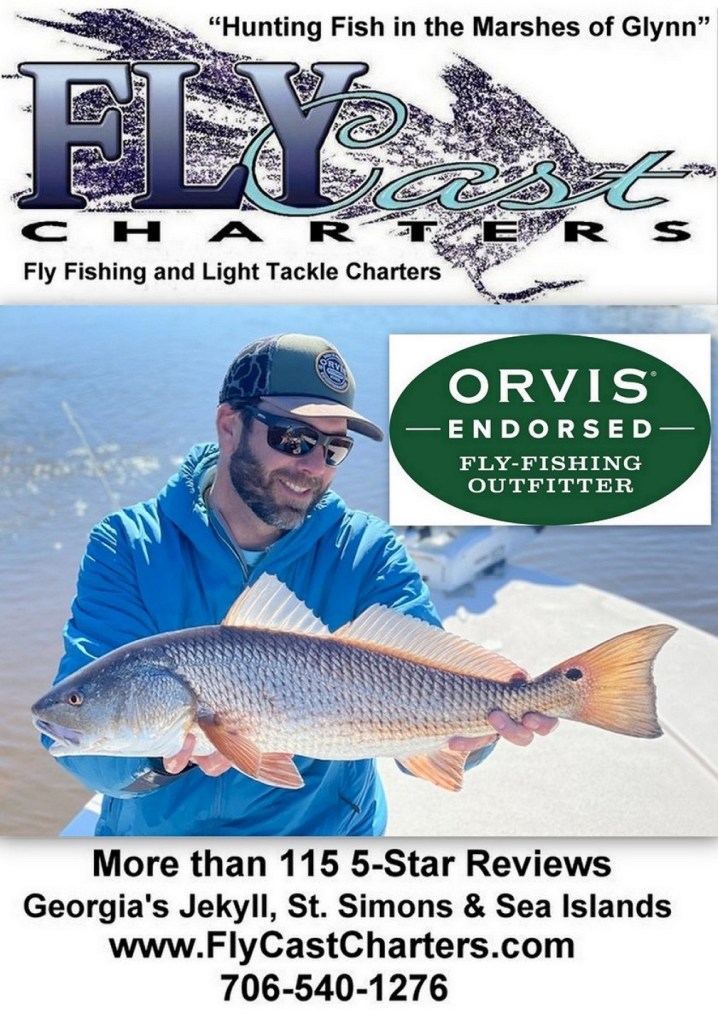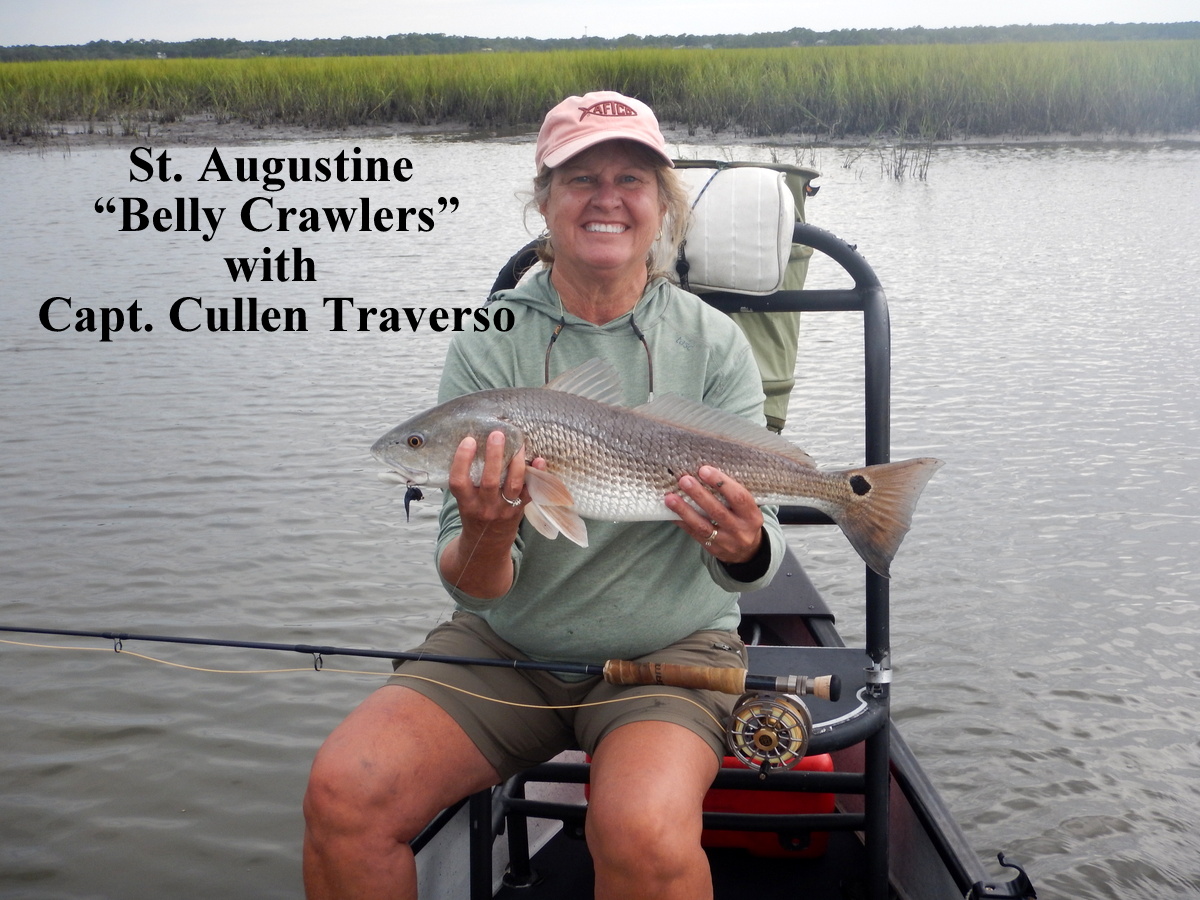UNI PRODUCTS FLY TIERS CORNER
Due to the Covid-19 panic having everyone preoccupied with other things, this month rather than profiling a fly tier, we have profiled a fly.
By Jimmy Jacobs
March 2020
My fly line stretched out above the smooth water, propelling the nymph on the end of the leader downstream and across the current from my casting position. The weighed fly plopped into the moving water and began its arcing course across the flow. As it dipped over a mild riffle to drop into a hole gouged out of the sand and gravel bottom, I felt the unmistakable thump of a strike, followed by the animated pressure of a fish on the line.

Photos by Jimmy Jacobs.
Soon I was releasing a colorful rainbow trout of 10 inches. The action was taking place on the Devils Race Course Shoals of the Chattahoochee River in metro Atlanta. But it could have been virtually anywhere in the southeast that trout live. And, the episode is further cemented by belief that a Beadhead Prince Nymph just may be the most versatile and productive fly pattern that can be thrown into cold waters.
From the big tailwaters to the high mountain wilderness streams, the Prince has performed royally as a trout attractor. Whether tossed into major tailwater rivers, mountain streams full of stocked fish, or tiny rivulets teeming with wild rainbow or brook trout, it is a pattern that consistently leads to tight lines.
Fishing the Prince
The Prince also lends itself to a number of presentations. It can be fished in the classic wet fly fashion as I employed it on the Hooch, quartering downstream and across the current. It can be dead-drifted under a strike indicator, used as dropper under a dry fly in calm water, or “high-sticked” on a tight line through riffle areas. In deeper runs it is used as a dropper behind weighted streamers, and it is effective when stripped through lake waters as well. In all of these locations and situations it is a proven producer of trout.

High-sticking a Prince on a small mountain stream. Photo by Polly Dean.
What’s in a Name?
When I first discovered the Beadhead Prince, its peacock herl body, white wings and red thread reminded me of the basic color scheme of a Royal Coachman or Wulff. I assumed it gained its name from being not quite as royally dressed as those venerable dry flies, thus it was only a prince. As with many of my assumptions, I was dead wrong.
The Prince Nymph was originated by a pair of Bemidji, Minnesota brothers name Don and Dick Olson and was called the Brown Fork Tail. Later it was championed on western streams by Doug Prince of Monterey, California, to the extent that it became his namesake. The beadhead was a later edition to the original pattern.
Though it is called a nymph, the Beadhead Prince bears scant resemblance to any aquatic critter found anywhere in streams. So the question is why do trout seem so fond of trying to eat it?
Motivational speaker and author Andy Andrews pointed out that the bravest man in history was the first guy to eat an egg. Can you imagine that innovator turning to his buddy and saying, “I’m going to eat the next thing that comes out that chicken’s butt.”
Obviously, trout are not just being brave when they eat something. With millions of evolutionary years through which to hone their eyes and appetites, trout must think the Prince resembles something they see and eat quite often. Whatever it is, it must also be plentiful and widespread, judging from the variety of places that this fly catches fish.

A brown trout that fell for a Beadhead Prince. Photo by Jimmy Jacobs.
The late Don Pfitzer was trained as an entomologist and worked with the Tennessee Wildlife Resource Agency beginning in the late 1940s. He surveyed trout populations and evaluated many of the streams of the Southeast during the restoration of southern trout waters during that period, right up until he passed away in 2015. Prior to his retirement, he also was an assistant director of the U.S. Fish and Wildlife Service in the Southeast. Among his other relevant qualifications, Don was also a skilled fly tier and astute trout angler.
“The Prince Nymph, in my opinion, doesn’t look like any honest to goodness aquatic nymph,” Pfitzer said during one of our many conversations. “There’s no question in my mind that it imitates one of the larger ant types. It’s not necessarily the black ant. There are a lot of brown ants the same size–big carpenter-type ants. In the mountains they are quite common.”
During presentations to fishing clubs and other groups, Don often showed images of the contents of trout stomachs. Invariably, as much as 60 to 80 percent of that biomass is composed of flying or crawling ants. The crawling varieties are very available to trout because the insects build their colonies under rocks or in the dirt near streams. When it rains, the rising water simply washes them into the creek and rivers. Other winged and crawling ants are undoubtedly blown off of streamside vegetation as well. Even the shape of the Prince supports Pfitzer’s observations. “The beadhead is an attractor. Of course, an ant has a big head. It (the Prince) just looks like an ant,” he mused, but also went on to add, “I don’t think it was originally tied to be an ant.”
That similarity to and availability of ants would explain why the Prince Nymph is just as effective on winter tailwater streams, as it is on a variety of waters in the warmer months.






